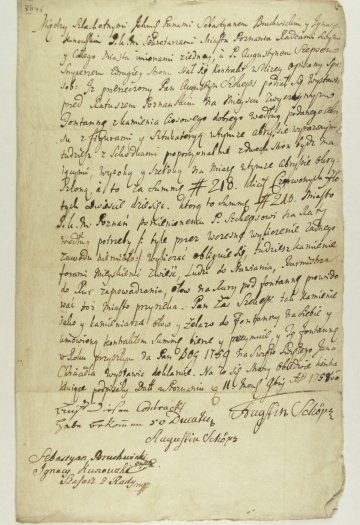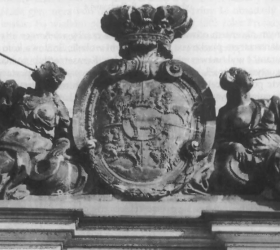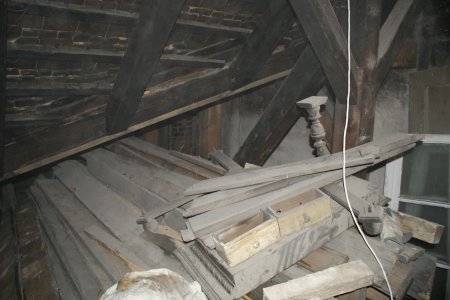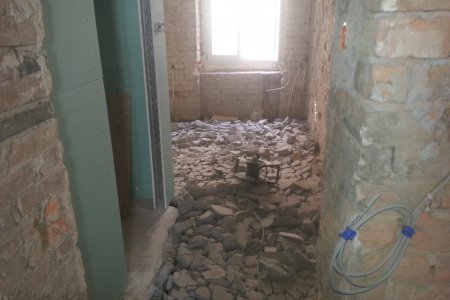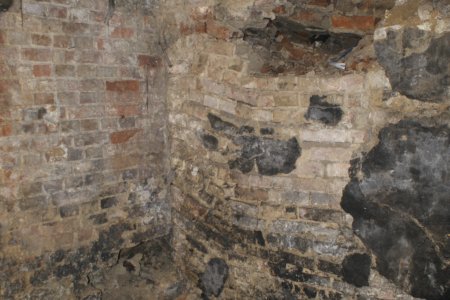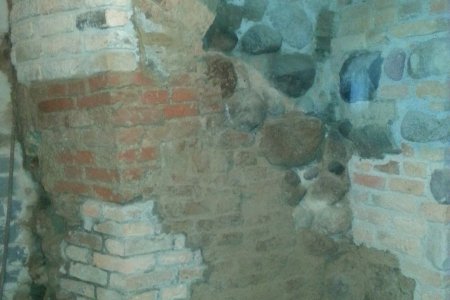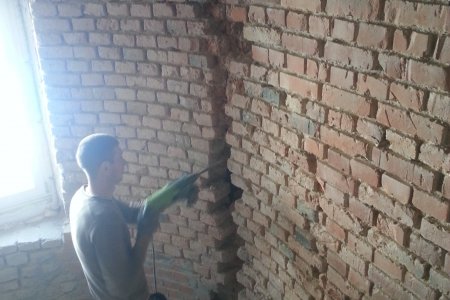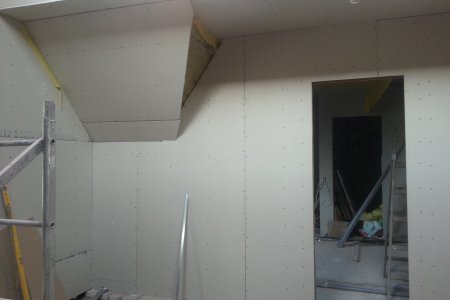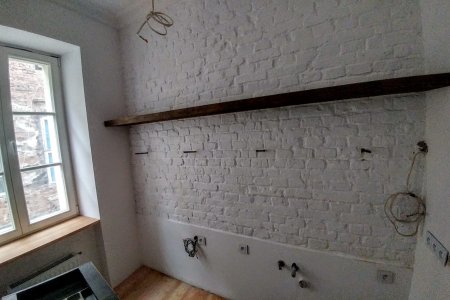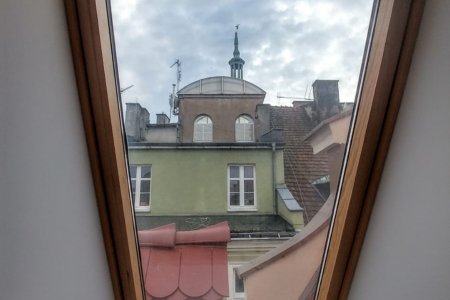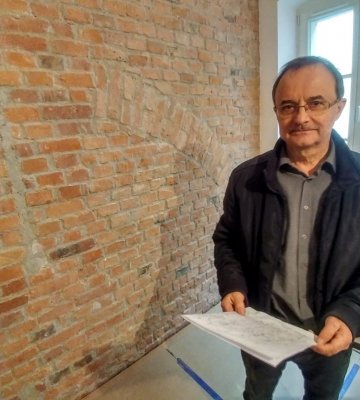In the years 1785-1787 Schoeps was a contractor finishing the interior of the All Saints' Church, which was being constructed at that time. The tower porch features a sculpture of Moses from 1787. In the Court Room of the City Hall there is a statue of King Stanisław August, made by Augustyn Schoeps in 1791. Interestingly, it is the only well-known statue of the king, most probably funded by the local authorities "to commemorate the Constitution of 3 May".
The attic of the Guardhouse is crowned with stone sculptures made in light grey sandstone from the area of Śmiłów near Szydłowiec. It is believed that the sculptures were created by Jan Chrystian Kamsetzer or Augustyn Schoeps. One of Schoeps’ most monumental achievements is a decoration on the main altar of the Poznań Cathedral entitled "Giving the Keys to St. Peter". Unfortunately, after the Second World War, it was decided to re-gothicise the cathedral and, although the altar survived the occupation in quite good condition, it had to be demolished.
Thanks to the help of the Poznań Municipal Office, we received a link to a database of Poznań’s residents in 1792, based on a city property inventory prepared by Adam Bieniaszewski. The data comes from the city books, but since plot numbers were changed several times within a short time (there were no address numbers yet), identification of buildings is not always possible. Based on Rzepecki’s description from the first half of the 18th century, which specified the location of buildings, two tenement houses (present Kramarska 7 and 9) were included in Wroniecka Street, because Kramarska did not exist at that time – there was only an access road to the properties fronting the Market Square (so-called rear road). The small tenement no. 9 was a rear house of tenement no. 7, which fronted Wroniecka Street. Adam Bieniaszewski referred to it as Wroniecka 359 – owned by Augustyn Schoeps.
